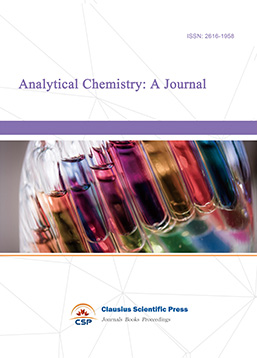Study on Properties of Slag Base Geopolymer Containing Portland Cement
DOI: 10.23977/jmpd.2023.070107 | Downloads: 22 | Views: 2421
Author(s)
Bo Ding 1,2, Bing Qi 1,2, Shukang Song 1,2
Affiliation(s)
1 Shandong Transportation Institute, Jinan, 250102, China
2 Key Laboratory of Expressway Maintenance Technology Ministry of Transport, Jinan, 250102, China
Corresponding Author
Bo DingABSTRACT
To explore the application of slag-based polymers, a study was conducted on the physical and mechanical properties of alkali-activated slag-based polymers (AACS) containing silicate cement by partially substituting cement with slag. A comprehensive evaluation of AACS performance was carried out by testing the setting time, compressive/bending strength and shear bond strength, as well as using XRD and SEM microscopic testing methods. The results showed that the AACS material had a fast setting and hardening process. Within a certain range, the compressive strength increased with the increase of cement content and alkali concentration, and the setting time was shortened accordingly. The AACS material had high bending strength and shear bond strength, and even at the 10% cement content level, the bending strength could still be maintained above 8 MPa. According to the SEM experimental results, the micro-morphology of the new and old interface of the AACS material was compact, and the hydration products were fused with the old mortar substrate, exhibiting a good bonding state.
KEYWORDS
Geopolymer; Slag; Bond strength; Microscopic propertiesCITE THIS PAPER
Bo Ding, Bing Qi, Shukang Song, Study on Properties of Slag Base Geopolymer Containing Portland Cement. Journal of Materials, Processing and Design (2023) Vol. 7: 41-48. DOI: http://dx.doi.org/10.23977/jmpd.2023.070107.
REFERENCES
[1] Zheng W., Zou M., & Wang Y. Research progress on alkali-activated cementitious materials. Journal of Building Structures, 2019, 40(01), 28-39.
[2] Valeria F.F Barbosa and Kenneth J.D MacKenzie and Clelio Thaumaturgo. Synthesis and characterisation of materials based on inorganic polymers of alumina and silica: sodium polysialate polymers [J]. International Journal of Inorganic Materials, 2000.
[3] Tang L., Huang Q., Wang Q., et al. Corrosion resistance and mechanism analysis of geopolymer concrete and ordinary Portland cement concrete in the same sulfate environment. Materials Review, 2015, 29(06), 129-134.
[4] Jirasit F, Rüscher CH, Lohaus L, Chindaprasirt P. Durability performance of alkali-activated metakaolin, slag, fly ash, and hybrids. In: Developments in strategic ceramic materials II: Ceramic engineering and science proceedings. Hoboken: Wiley Press; 2017. p. 1–12.
[5] Ramezanianpour A A, Moeini M A. Mechanical and durability properties of alkali activated slag coating mortars containing nanosilica and silica fume[J]. Construction and Building Materials, 2018, 163(FEB.28):611-621.
[6] Tan Y., Wu F., Wang W., & Chen M. Study on bonding interface properties of alkali-slag cement repair material. Concrete, 2019(07), 153-156.
[7] Ayd N S, Baradan, Bülent. Effect of activator type and content on properties of alkali-activated slag mortars[J]. Composites Part B Engineering, 2014, 57:166-172.
[8] Palomo A, Fernández-Jiménez, Kovalchuk G, et al. Opc-fly Ash Cementitious Systems:Study of Gel Binders Produced During Alkaline Hydration[J].Journal of Materials Science,2007,42(9):2958-2966.
[9] Shi X S, Collins F G, Zhao X L, et al. Mechanical properties and microstructure analysis of fly ash geopolymeric recycled concrete[J]. Journal of Hazardous Materials, 2012, 237-238(OCT.30):20-29.
| Downloads: | 4087 |
|---|---|
| Visits: | 253319 |
Sponsors, Associates, and Links
-
Forging and Forming

-
Composites and Nano Engineering

-
Metallic foams

-
Smart Structures, Materials and Systems

-
Chemistry and Physics of Polymers

-
Analytical Chemistry: A Journal

-
Modern Physical Chemistry Research

-
Inorganic Chemistry: A Journal

-
Organic Chemistry: A Journal

-
Progress in Materials Chemistry and Physics

-
Transactions on Industrial Catalysis

-
Fuels and Combustion

-
Casting, Welding and Solidification

-
Journal of Membrane Technology

-
Journal of Heat Treatment and Surface Engineering

-
Trends in Biochemical Engineering

-
Ceramic and Glass Technology

-
Transactions on Metals and Alloys

-
High Performance Structures and Materials

-
Rheology Letters

-
Plasticity Frontiers

-
Corrosion and Wear of Materials

-
Fluids, Heat and Mass Transfer

-
International Journal of Geochemistry

-
Diamond and Carbon Materials

-
Advances in Magnetism and Magnetic Materials

-
Advances in Fuel Cell

-
Journal of Biomaterials and Biomechanics


 Download as PDF
Download as PDF